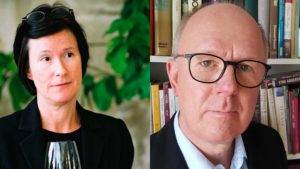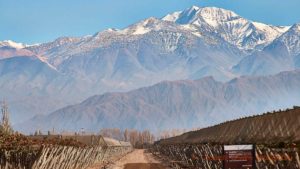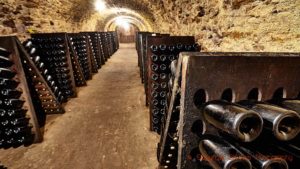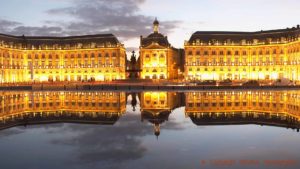
On price and prestige
Why does a wine cost what it costs? It is never easy for a producer to put a price on his wine. It requires reflection. Not least, he has to decide how to position himself on the market.

The price is not determined solely based on how much it costs to produce a wine. In fact, in many cases, the cost of production of the wine plays a minimal role in pricing.
A high price signals prestige and luxury, and some consumers are willing to pay for it. This is the way humans are. The fact that Gerard Bertrand can charge 190 euros for his rosé wine Le Clos du Temple 2020 shows that it is only a matter of knowing what you want and presenting the wine in a handsome bottle (of course, the wine must be of good quality, that goes without saying).
And then you have to have the courage to do it. For example, the courage to launch a rosé from Languedoc that is more expensive than most prestigious chateaux in Bordeaux. A few decades ago, Krug launched its Clos du Mesnil. It costs 1000 euros a bottle, around thirty times more than the neighbour’s wine.
If you present yourself as the highest prestige (and high price), we consumers tend to believe that it is.
Demand can, of course, drive up prices, but it can also be the other way around; that the price drives demand. When Danie Steytler Jr. at Kaapzicht in Stellenbosch launched his “Chenin Blanc The 1947” (the year the vines were planted), it was hard to sell. Not many people wanted it, even though it was excellent (we tasted it on our South African trip). But then he doubled the price. The bottles were gone instantly.
That a wine is made in small quantity and perhaps from a single vineyard, such as Clos du Temple, sometimes leads to a higher price. Rarity value is important in the wine world. Of course, there are many producers with small vineyards that do not make expensive wine, so smallness is no guarantee of a high price.
Wine can be expensive even if it is made in large volumes. For instance, many of the famous Bordeaux châteaux actually make large volumes. Not to mention Champagne, where some highly regarded “prestige houses” can make millions of bottles. It does not have to be a handcraft to be expensive.
Wine is very much about marketing and presentation. Think of the experiment with wine tasters who got to try two different wines blind and assess and describe them. The wine they had been told cost $5 received moderate reviews. The wine they were told cost $30 was thought excellent. But it was the same wine in both glasses. One’s expectations play a huge role in taste. People are very good at meeting their own expectations.
But not all consumers care about prestige. What price the producer puts on his wine also depends on what market he is targeting. But then, of course, you have to define what you mean by prestige. Some natural wines take pride in being cloudy and unstable and can charge a hefty fee for it.
There are perhaps two conclusions to be drawn:
1. To give a really honest assessment of a wine’s quality, you have to taste it blind. Completely blind.
2. If you offer your guests a truly exclusive wine, make sure that they see the label.
Wine travel
Our autumn travel season is soon starting. We are very happy to go travelling in the wine regions once again. This season we have some great classics on our wine travel programme, with destinations in France, Italy, Portugal, and Spain. But for the moment this is only offered to our Scandinavian travellers. We have two different sets of wine tours: for Scandinavian clients in Swedish and for international clients in English. International travel into Europe is still challenging.
We are right now putting the finishing touches on our (English language) tour programmes for 2022, and also some of the first tours for 2023. We will offer you some great tours and fantastic experiences in Bordeaux and Champagne next year. And some other exciting things too. Stay tuned.
Enjoy the Brief!
Britt & Per
If you appreciate what we do, you can help us:Tell your friends about the Brief or send it to them.
Like us and follow us on social media:
BKWine Magazine on Facebook | Wine Tours on Facebook
Twitter | Instagram | Linkedin | YouTube
What’s on at BKWine Tours
BKWine is also one of the world’s leading wine tour operators. Here’s what we currently have on our scheduled wine tour program:
- Chile-Argentina, January 17-30, 2022
- South Africa, (February 9-18, 2022 – postponed) plan for 2023
- New Zealand, (March 10-25, 2022 – postponed) plan for 2023
- Bordeaux, April 20-24, 2022 (program available soon)
- Champagne, May 4-8, 2022 (program available soon)
- Bordeaux and Champagne, Sept 28 – Oct 6, 2022 (program available soon)
- Champagne, Sept 28 – Oct 2, 2022 (program available soon)
- Bordeaux, October 2-6, 2022 (program available soon)
We also make custom designed wine tours.
We’re different than most other wine tour operators. We are people who know wine inside out, who travel constantly in wine regions, who write award winning books about wine. Who do this out of passion.
Our wine tours are different from others.
More in wine tours: BKWineTours.com.
A typical year we organise more than 30 wine tours to destinations across the world. In Europe: France, Italy, Spain, Portugal and more. World-wide: South Africa, Chile, Argentina, New Zealand. Thanks to our Scandinavian background we have a separate offer for the Scandinavian market. These are sometimes offered in English and also available as custom made tours. For example, these destinations:
Read our books
We have written eleven wine books. They have won awards from the Gourmand Awards, The International Organisation of Vine and Wine (OIV) and others.
Unfortunately, only one of them has been translated to English; the others are (so far) only available in Swedish. This is the one that is available in English:
Here’s the full list of our books:
News from the World of Wine
Short briefs on what’s been happening in the world of wine recently and other interesting things.
Historically low wine production 2021 in France
This year, the wine producers in many parts of the world have had severe weather problems: heat, fires, floodings, frost, diseases. Spring frosts affected almost all wine regions in France for several nights in April.

Because the budding, after a mild winter, had already come a long way, the ravages of the frost were enormous. Masses of rain, with subsequent downy mildew attacks, made a difficult situation worse. This means that the French Ministry of Agriculture estimates that the harvest in 2021 will be up to 30% smaller than usual. It may be the lowest volume in 45 years, between 32.6 and 35.6 million hectolitres, less than in both 1991 and 2017, years that were also hit by severe spring frost.
In the 1970s and 1980s, the vineyard area in France was higher than it is today and yearly production never went below 50 million hl. Only five years between 1970 and 1990 produced less than 60 million hl. 1973 and 1979 were record years with over 80 million. In the last six years, production has been between 36.4 million hl (2017) and 49.2 (2018). Read more: Production viticole 2021.
When the grapes change colour, photo evidence from the Douro Valley
An essential phase in grape ripening is what the French call le véraison. For lack of a better one, many other languages use the same word. Véraison means that the grapes change to their final colour.

It takes place around the turn of the month, July-August. The red grapes go from green to dark blue, and the white grapes become more transparent. The weather must stay sunny and dry to enable the grapes to change their colours as homogenous as possible. Now, that does not always happen, as Kay Bochard at Quinta do Tedo in the Douro Valley tells us on her blog:
“Since we have 20+ red varieties growing in our Tedo vineyards that undergo vérasion at slightly different times, a vineyard walk at this time of the year brings surprises – some clusters a tapestry of green, pink, red and purple, while others are green. To think that one day they will all share the dark indigo/purple Douro grape colour palette is almost hard to believe.” See her beautiful and illustrative photos of le véraison here: Kay’s blog
Will heat-resistant grape varieties from Cyprus be a success in Australia?
We have already heard of Portuguese grape varieties in Bordeaux and Greek ones in Provence. Now the turn has come for Cypriot grape varieties to (maybe) help Australia’s wine industry meet the climate challenges.

Studies are currently underway, and wine tastings with Australian wine consumers have yielded positive results. The tasters liked several grapes from Cyprus. The green xynisteri and the red maratheftiko did well in comparison with chardonnay, pinot gris and syrah. The Cypriot grape varieties have the nowadays coveted quality of being resistant to heat and drought.
Xynisteri is one of the grapes used in the legendary sweet wine Commandaria. Maratheftiko produces powerful, colourful wines and is now recognized for its good quality. Read more: wineaustralia
Regenerative agriculture, a new term to learn
Organic, biodynamic, sustainable and now also regenerative agriculture. Are all just variations of the same theme? Torres, the producer from Catalonia who is also an environmental warrior, organized a symposium on regenerative agriculture earlier this summer.

In short, it is about helping the environment by working the soil in specific ways. This can mean several different things, such as minimal tilling and always having a cover crop. This will help sequester carbon dioxide, preserve the moisture and at the same time provide fertilizer to the soil. Regenerative also means reducing the use of plant protection products and increasing biodiversity. Everything you do should have as little impact on the environment as possible. We recognize all this from organic and sustainable agriculture.
For Torres, however, regenerative agriculture is above all about the soil’s ability to capture carbon dioxide, which he believes we must strengthen to contain the climate crisis. Regenerative agriculture has more impact in the United States than in Europe, at least for the moment, perhaps because organic farming is stronger in Europe. Read more: Torres’ press release and also on regenerative agriculture.
Wine is the most popular French aperitif (pre-dinner drink)
During the late afternoon/early evening Happy Hour, the French cafés offer lower prices on beer and cocktails, and if you look around, mojito seems to be the most popular drink right now.

But the fact is the favourite aperitif among the French is still wine of various kinds. White wine is at the top, followed by champagne, the sweet vin doux naturel, rosé wine, other sparkling wine and red wine. Beer is also mentioned as a favourite apero and, of course, pastis, the classic from the south of France. After mainly being associated with Marseilles and older men in berets, it has made a comeback and is even a bit trendy. Today you can find pastis with different flavours from creative producers. This is, however, often doomed to fail because nothing can overpower the anise taste. The aperitif dates back to the Middle Ages. It was at the time considered that an aperitif promoted the appetite and helped digestion. And that still applies, in addition to providing a relaxed moment before dinner.
Wine from recycled glass bottles plays a role in the environment
A wine importer in Sweden recently launched a wine in a bottle mainly made from recycled glass. Is this something to write about? Yes, apparently, many wines are bottled in new glass bottles or in bottles made with only a small percentage of glass waste.

A bottle with as much as 75% recycled glass, like the Spanish wine launched in Sweden, is evidently unusual. American wine giant Gallo is a world leader at using recycled glass. Their wine bottles contain an average of 45% recycled glass.
To recycle glass is, of course, a good deed for the environment because less energy is required to melt recycled glass than make new glass. Glass is also infinitely recyclable without losing any of its quality. Verallia, a large glass manufacturer, says that by adding 10% glass waste in the production, CO2 emissions from the glass furnace are reduced by 5% and energy consumption by 2.5%. You can calculate the environmental benefits if you add more glass waste. Read more: hermanssonco and verallia.
Features of the Month
Articles and features published on BKWine Magazine and on our wine travel blog and photography blog in the last month.
Where do we go from now with organic wines? | Britt on Forbes
Predicting the future of organic wines may seem easy. The number of certified hectares is steadily increasing in Europe. Small wine growers convert, as well as famous Bordeaux chateaux.

Consumers increasingly buy organic wines. Bulk prices for organic wine soar. Is there any reason why this should not continue? There is much to suggest that the organic wine industry will continue to grow. This is the eighth article in our series on organic, biodynamic, sustainable and natural wine.
Read more in Britt’s article on BKWine Magazine, originally published on Forbes: The future of organic wines | part 8 | Britt on Forbes.
Read: Read our book on organic wines.
BKWine featured in Swedish daily papers
It’s fun when the “printed” press pays attention to what we do. The other week it was a double, in both Helsingborgs Dagblad (HD) and in the sister magazine Sydsvenskan, two regional papers in the south of Sweden, in “Skåne” (or Scania).

They both had a report about Britt, who of course comes from Helsingborg, one of the main cities in the region, and about what we do. “With Paris as a base, Britt Karlsson from Helsingborg and her husband Per organise wine tours around the world. –The tours have a high recidivism rate, jokes the wine specialist.”
Read more in Per’s article on BKWine Magazine: “The Scania wine expert” in Swedish papers.
One of the top estates in Sauternes: Chateau Raymond-Lafon
Château Raymond-Lafon, the chateau and wine estate of the Meslier family, is next door to the legendary Château d’Yquem. Only a few meters apart, the vineyards differ and both chateaux have the same strict selection and the same vinification and ageing methods.

Which is perhaps not so strange: Pierre Meslier was the manager of Yquem between 1963 and 1989. In 1972, he bought Raymond-Lafon and continued to make wine here after retiring from Yquem, in the same spirit as he did at Yquem. But a wine that costs significantly less than the neighbour. Today, the business is run by his children Marie-Françoise, Charles-Henri and Jean-Pierre Meslier.
Read more in Britt’s article on BKWine Magazine: A master of noble sweet wines: Château Raymond-Lafon.
Travel: Come on a wine tour to Bordeaux with BKWine.
Zweigelt From Neusiedlersee DAC Shows That Austria Is So Much More Than White Wines | Britt on Forbes
Austria is not just white wines. Increasingly its red wines grab our attention. We have tasted wines from Neusiedlersee DAC in Burgenland in easternmost Austria. Lake Neusiedl has long been famous for its noble sweet wines.

But red grapes also thrive by this shallow lake, zweigelt, not least; Austria’s very own grape. It gives wines with intensity and cherry fruit, sometimes with elegance, sometimes with power and body.
Read more in Britt’s article on BKWine Magazine, originally published on Forbes: Austrian Neusiedlersee, famous for zweigelt, but also exciting dry and sweet white | Britt on Forbes.
Wine Tours
Some information on our current and future wine tours. Book a wine tour with the “world’s top wine tour operator” today (or when you feel like travelling to wine country).
South America: Two exciting weeks in the vineyards of Argentina and Chile | wine tour in South America
South America is different and very easy to fall in love with. Our wine tour in January takes us to Argentina and Chile, the two most important wine countries in South America. They are close to each other; “only” the vast mountain range of the Andes separates them.

In Argentina, the vineyards are inland in a dry and hot climate. In Chile, there are wine regions both on the coast and in the warmer Central Valley. We will notice the differences in the wines as we visit producers in the two countries.
We start the tour in Buenos Aires. From there, we fly to Mendoza to discover Argentina’s most famous and biggest wine region. We continue across the mighty Andes, where the border with Chile is at 3000 meters altitude. Once in Chile, we cross the narrow country to reach Viña del Mar on the coast. We visit the slightly cooler wine regions close to the Pacific Ocean, with their superb sauvignon bland and pinot noir. Our last wine region will be the Colchagua Valley, known for its excellent red wines.
There will be many wine tastings, delicious lunches with beef and vegetables on the grill and meetings with dedicated winegrowers. We also have time for some sightseeing. After two intense weeks, we end our tour in Santiago de Chile.
Join us on our wine tour to South America!
- Wine tour to Chile-Argentina, January 17-30, 2022.
South Africa: ambition and wines with character | wine tour
South Africa’s wine industry has come a long way since the end of apartheid in the 1990s. The export snowballed. The wines were often unpretentious and pleasant. But after a while, the ambitions grew as well.

Not least, chenin blanc has gone from brandy grape to acclaimed quality grape. Our tour will take us to Stellenbosch, Swartland, Franschhoek, Elgin and Walker Bay, where we will discover the amazing range of South African wines today.
We will stay a couple of days in Cape Town. We will get to know the exciting South African cuisine with influences from both East and West. We will eat superb lunches at the wineries.
In March, the harvest has probably already started. We will discuss viticulture and winemaking with the wine producers. We will learn the specificities of making wine in South Africa. Character and quality in the wines are essential for them. But also to take responsibility socially and to protect the environment.
South Africa is well worth a wine tour.
- Wine tour to South Africa, February 2023. (the program for 2023 is soon available)
Please note: The situation in South Africa is not yet stable. We will probably not be able to do this wine tour in South Africa in February 2022 due to the covid-19 situation. But long-term planning is fun, so let yourself be inspired by the program linked above and start planning for February 2023 now. We will announce the dates soon.
A different wine country, far away | wine tour in New Zealand
New Zealand is an unusual New World country. It is cooler, which gives aromatic white wines and fine acidity in the reds. Their sauvignon blanc wines took the wine world by storm in the 1980s and changed our view of the grape.

A lot has happened since then. We will notice this on our incredible tour to a very different wine country. The wine is the centrepiece of the tour, as always, but you will see much of the country: the magnificent landscape, geysers, glaciers and much more. We will visit the big cities of Auckland and Wellington.
We will discover that New Zealand offers much more than sauvignon blanc. We will taste syrah in Hawke’s Bay, pinot noir in Central Otago, riesling in Wairarapa and cabernet sauvignon on the picturesque Waiheke Island.
The tour to New Zealand is a great adventure.
- Wine tour to New Zealand, March 2023 (the 2023 program will soon be available)
Please note: There will be no tour to New Zealand in 2022. The borders are currently closed and will not open in time for the 2022 wine tour. But we have already started planning for 2023, and we hope you will do the same. More information coming soon!
Bordeaux, excellency above all | wine tour
Bordeaux has inspired many winemakers around the world. The grape varieties grown in Bordeaux and now spread all over the world. Nobody is in doubt about the excellency of the Bordeaux wines.

To this, add the many grand chateaux as in Bordeaux. We will visit some of them, taste their wine, learn about the work they do, and also have magnificent lunches in them. For a wine lover, Bordeaux is a must to visit.
- Wine tour to Bordeaux, April 20-24, 2022
- Wine tour to Bordeaux, October 2-6, 2022 (This autumn tour will also be offered in combination with the Champagne tour)
The programmes for 2022 will be available soon.
Champagne, a special kind of sparkling wine | wine tour
Champagne is famous and prestigious, but it is not the only sparkling wine made in the world. Is there a big difference? Most of the time, yes. You will learn the reasons for the success of Champagne on this tour.

We will talk about how you make champagne, the specificities of the terroir and so on. We will meet smaller growers and bigger houses, all of them having an essential part in the champagne wine industry. And, not least, we will taste magnificent champagnes.
- Wine tour to Champagne, May 4-8, 2022
- Wine tour to Champagne, September 28-October 2, 2022 (This autumn tour will also be offered in combination with the Bordeaux tour)
The programmes for 2022 will be available soon.
Champagne and Bordeaux combined: the two most famous French wine regions | wine tour
Can you not decide between Bordeaux or Champagne? Then go to both of them. This tour combines these two great regions during an intense 9-day tour.

We will stay in Reims in Champagne for four nights and in Bordeaux for four nights. Both these cities are exciting to explore in your free time.
Our days in Champagne will give you a feeling of how the big houses and the smaller growers work and how they make their champagnes. We will discuss winemaking and terroir. Our lunches will allow you to learn more about how to match champagne with food.
The high-speed train will take us to the beautiful city of Bordeaux in the south-west of France. We will visit Médoc and Graves, famous for its cabernet sauvignon-based wines and smaller family estates in Saint Emilion. Our lunches at the chateaux with selected wines are an experience in itself. Join us on this tour to France’s two most famous wine regions.
- Wine tour to Champagne and Bordeaux, September 28 – October 6, 2022
The programmes for 2022 will be available soon.









